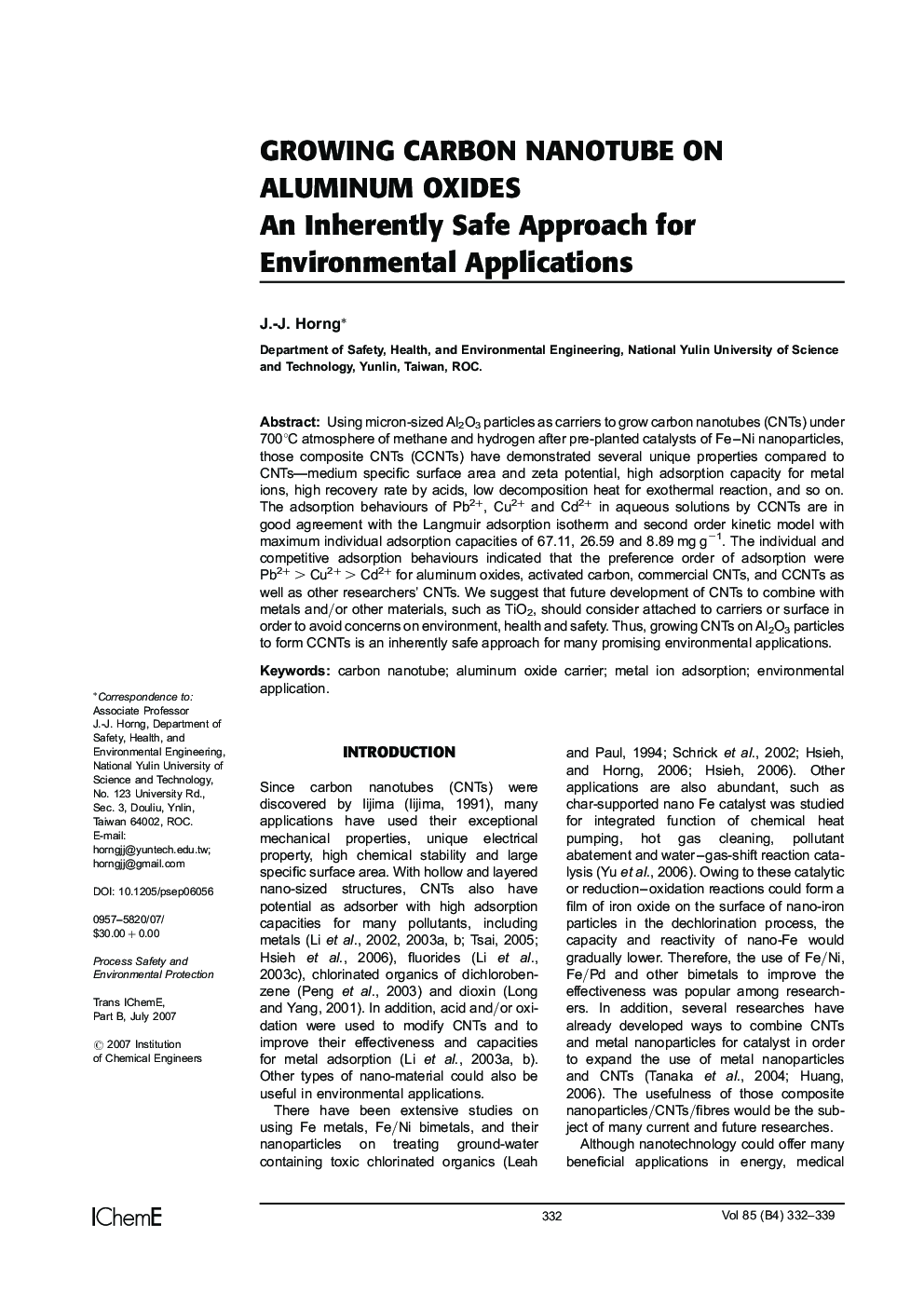| Article ID | Journal | Published Year | Pages | File Type |
|---|---|---|---|---|
| 588800 | Process Safety and Environmental Protection | 2007 | 8 Pages |
Using micron-sized Al2O3 particles as carriers to grow carbon nanotubes (CNTs) under 700°C atmosphere of methane and hydrogen after pre-planted catalysts of Fe–Ni nanoparticles, those composite CNTs (CCNTs) have demonstrated several unique properties compared to CNTs—medium specific surface area and zeta potential, high adsorption capacity for metal ions, high recovery rate by acids, low decomposition heat for exothermal reaction, and so on. The adsorption behaviours of Pb2+, Cu2+ and Cd2+ in aqueous solutions by CCNTs are in good agreement with the Langmuir adsorption isotherm and second order kinetic model with maximum individual adsorption capacities of 67.11, 26.59 and 8.89 mg g−1. The individual and competitive adsorption behaviours indicated that the preference order of adsorption were Pb2+ > Cu2+ > Cd2+ for aluminum oxides, activated carbon, commercial CNTs, and CCNTs as well as other researchers’ CNTs. We suggest that future development of CNTs to combine with metals and/or other materials, such as TiO2, should consider attached to carriers or surface in order to avoid concerns on environment, health and safety. Thus, growing CNTs on Al2O3 particles to form CCNTs is an inherently safe approach for many promising environmental applications.
